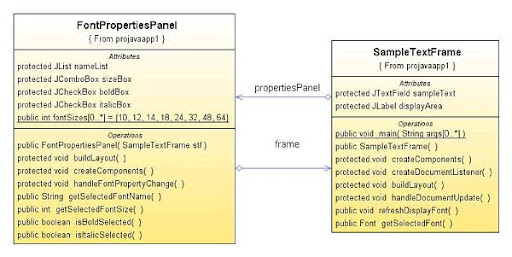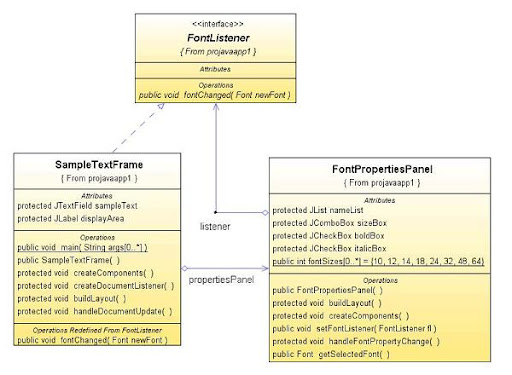After several days in studying hard for the midterm, I finally can take a break and relax a little bit. Meanwhile I feel that this blog is full of too much stuffs about IT field. It should be balanced with other topics.
In Cleveland, SoftRock FM 102.1 is the radio channel I listen to it so often. The songs it plays are almost very popular and favorite for people. It also has web site on the Internet for listening. Click "Listen Live" and enjoy it. Here you go. http://www.wdok.com/
Friday, March 21, 2008
Thursday, March 6, 2008
Google Web Toolkit
If you are familiar with Java programming but not familiar Ajax (Asynchronous JavaScript + XML) , Google Web Toolkit (GWT) is a good choice to deal with Ajax web application.
GWT provides its APIs for developers to write Java code in the program, and then compiles to JavaScript. In the web site of GWT, it gives a lot of features about GWT, and explains how to translate Java code to JavaScript.
Some people may have an question why I need to write Java code instead of JavaScript directly? In my opinion, it is about "software engineering". It may be easy if you only have a small or not so big Ajax application. Once you have more and more projects that need to do, you probably will find that your debugging time is longer than you think and your source code is hard to be reused. Due to these issues above, Google develops this way to deal with Ajax. Using GWT, we can leverage Java's ability and Java IDE tool to build application logic through well-designed object-oriented techniques.
GWT provides its APIs for developers to write Java code in the program, and then compiles to JavaScript. In the web site of GWT, it gives a lot of features about GWT, and explains how to translate Java code to JavaScript.
Some people may have an question why I need to write Java code instead of JavaScript directly? In my opinion, it is about "software engineering". It may be easy if you only have a small or not so big Ajax application. Once you have more and more projects that need to do, you probably will find that your debugging time is longer than you think and your source code is hard to be reused. Due to these issues above, Google develops this way to deal with Ajax. Using GWT, we can leverage Java's ability and Java IDE tool to build application logic through well-designed object-oriented techniques.
Saturday, March 1, 2008
To promote reusability
To reuse our source code or classes is a hard task specially when we don't think about this in the beginning of analysis or design. Even though we have already done our projects or programs that is not well-designed, we can use some refactoring function inside the IDE tool for us to adjust or arrange our source code, for instance, to extract the interface from classes. But, it is still much better if we know how to promote reusability and do it in the analysis/design phase. In the book, Pro Java Programming 2nd Edition, it provides 2 good principles (Loose Coupling and Strong Cohesion) for reference.
1. Loose Coupling
Coupling means that it refers to the degree to which classes depend upon one another, and two classes that are highly dependent upon each other are considered tightly (or highly) coupled. In other words, they cannot be used alone and also not be used for other classes. There are some examples from this book and I draw the class diagrams to explain the idea.
a.) This diagram shows that these two classes have strong coupling. They refer each other and are Bad-designed.

b.) This diagram shows that it uses an interface "FontListener" to reduce the coupling. "FontProperitesPanel" doesn't need to know who implements the interface "FontListener". It just calls the method "fontChanged()" in the interface, and "SampleTextFrame" that implements the interface will response.

c.) This diagram shows we create a "FontPropertiesFrame" class that extends "SampleTextFrame" that can eliminate "SampleTextFrame"’s references to the "FontPropertiesPanel" class and move them into a subclass of SampleTextFrame.
 2. Strong Cohesion
2. Strong Cohesion
If a class is highly cohesive, it means its responsibilities are closely related and that it’s complete. In other words, the class isn’t cohesive if it contains methods that perform unrelated functions or if some set of closely related functions is split across that class and one or more others.
So, I think that these 2 principles are quite useful when we design our classes structure.
1. Loose Coupling
Coupling means that it refers to the degree to which classes depend upon one another, and two classes that are highly dependent upon each other are considered tightly (or highly) coupled. In other words, they cannot be used alone and also not be used for other classes. There are some examples from this book and I draw the class diagrams to explain the idea.
a.) This diagram shows that these two classes have strong coupling. They refer each other and are Bad-designed.
b.) This diagram shows that it uses an interface "FontListener" to reduce the coupling. "FontProperitesPanel" doesn't need to know who implements the interface "FontListener". It just calls the method "fontChanged()" in the interface, and "SampleTextFrame" that implements the interface will response.
c.) This diagram shows we create a "FontPropertiesFrame" class that extends "SampleTextFrame" that can eliminate "SampleTextFrame"’s references to the "FontPropertiesPanel" class and move them into a subclass of SampleTextFrame.
If a class is highly cohesive, it means its responsibilities are closely related and that it’s complete. In other words, the class isn’t cohesive if it contains methods that perform unrelated functions or if some set of closely related functions is split across that class and one or more others.
So, I think that these 2 principles are quite useful when we design our classes structure.
Subscribe to:
Posts (Atom)